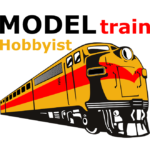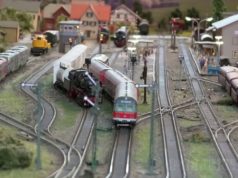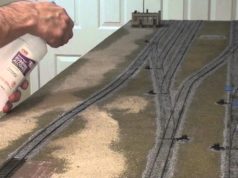If you have looked through our train track sections, you would have seen some of our track products have “code xyz” with “xyz” being a number such as 100 or 83. This may be something very new to you if you are just getting into the model railroad hobby.
In this article, we will explain what this is, and what this means to you as a model railroader for buying train tracks.
What Is a Model Train Track Code?
The code of a track is the height of the rail in thousandths of an inch. For example, code 83 means the height of the rail is .083 inches, and code 100 means the rail is .1 inches high. Each scale has popular codes the train track is modeled in, depending on the manufacturing company.
Here is a list of some of the popular codes in each scale:
- G Scale: code 332, code 250
- O Scale: code 148, code 125, and code 100
- HO Scale: code 100, code 83, code 70, and code 55
- N Scale: code 80, code 55
Code 332 track is the most popular to use in G scale. This scale is used mostly outdoors because of its size, and the track is made from brass, because it can resist the elements of outdoor weather. However, when the price of copper raises, so does the cost of production and retail prices for brass train tracks. Another alternative is to use Code 250. Made from aluminum, it’s cheaper and when aluminum oxide is produced from the weather, it actually helps conduct electricity.
The differences in the codes also represent the weight of the prototype rail. In O scale, for instance, code 148 represents 132 lb. prototype rail, and is used for modern railroads. Code 125 represents 100 lb. prototype rail, and is used for yards, siding, and early-era railroads. And Code 100 represents 70 lb. rail, a lightweight rail, used for old spur track, lumber railroads, and industrial sides.
When you go to smaller scales like HO, the code representation of the rail weight is different. In HO scale, for example, code 100 does not represent 70 lb. prototype rail. This makes sense, because a lighter rail would not be the same height in a smaller scale. Code 100 track in HO scale is actually 156 lb. prototype rail. Code 83 is 132 lb., code 70 is 100 lb., and code 55 is 75 lb.
Code 83 track is more prototypical than code 100, and is the choice of modelers who like to keep things close to actual scale. But it really is just the preference you have and the appearance you prefer as a modeler. Both code 100 and code 83 represent heavier rails that would be used for mainline railroads. So, one can use code 100 for the mainline, and code 83 for passing sidings and spurs. Or, one can use code 83 for the mainline, and code 70 for branch lines and passing sidings, and even use code 55 for small spurs.
Then there’s N scale with codes 80 and 55. Code 80 is the most popular code in N scale track. It used to be the only code available, and has been the standard for N scale railroading. Because of this wide acceptance of code 80 track, it is the most distributed, widely available, and due to the high production, is also cheaper compared to code 55. But code 55, like code 83 in HO scale, is more proportionally accurate than code 80. Code 55 can cause problems, however, if you have old N scale trains, because the flanges (the part of the wheel that keeps the train on the track) are larger and will hit the ties and cause a derailment.
Bottom line, when it comes to the code of a track it all depends on personal preference. If you are the type of modeler who wants to have everything to an accurate scale, you will choose a different code than the modeler who thinks a higher code makes the appearance of his layout look better. Or you can use different codes in the same layout, one being the mainline, and the other representing branch lines, passing sidings, etc. The choice is all yours.






